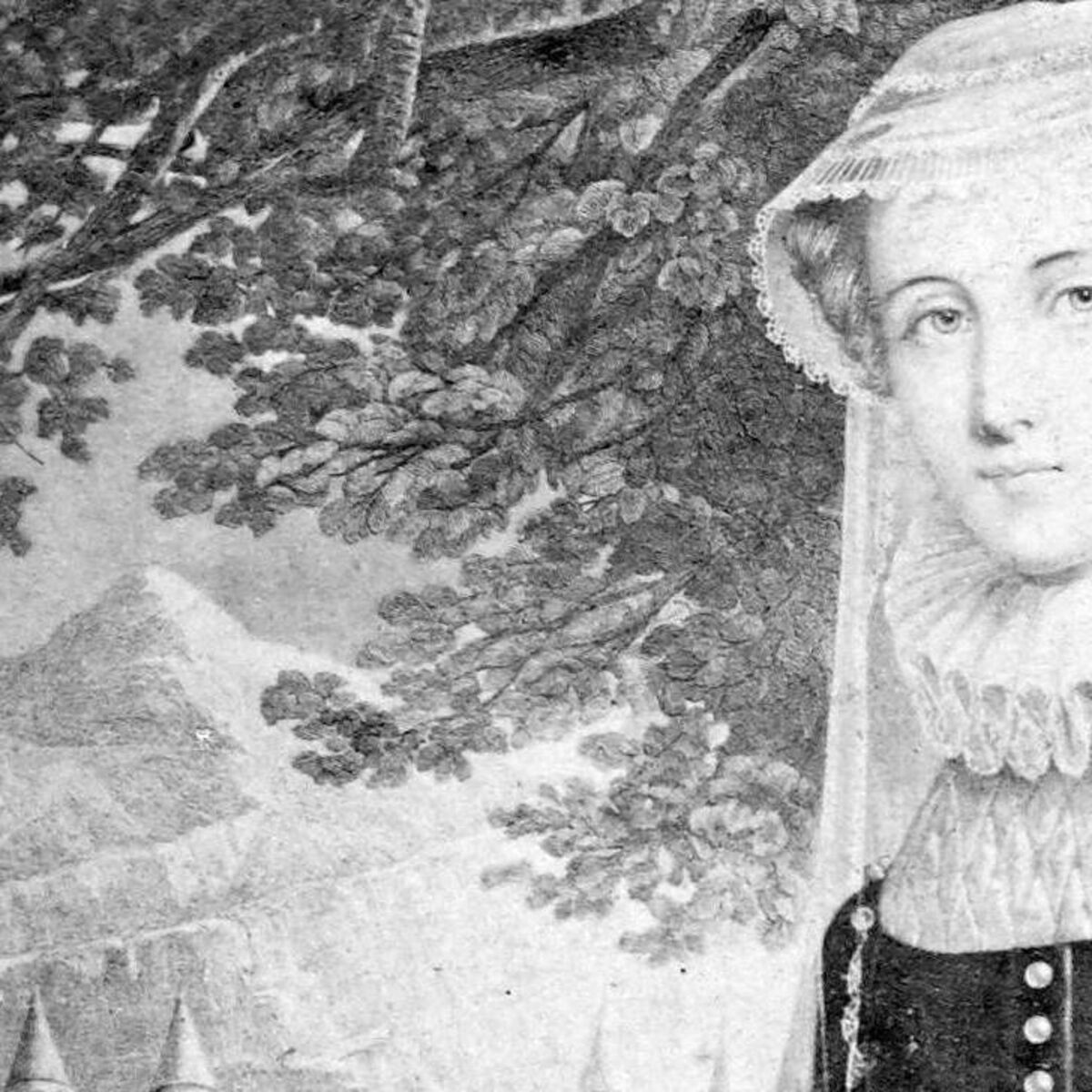By Clodagh Finn,Irishexaminer.com
Copyright irishexaminer

But first, let us go back to the fairytale beginning, told so vividly in Nicola Pierce’s eye-opening and enriching new book, Great Irish Wives.
On a spring day in 1785, Tone, a penniless law student at Trinity College Dublin, was on his way to buy books when he happened to look up and see a young woman sitting at the window of number 69 Grafton St (on the right, as you are going towards Stephen’s Green).
At the very same moment, 15-year-old Martha Witherington looked down and saw him from her perch on the second floor of the family’s woollen drapery business.
He thought her “beautiful as an angel”, and she was equally smitten.
“A lover of theatre and Shakespeare, Tone had found in Martha… his own Juliet and balcony,” writes Pierce, drawing on Rosamond Jacob’s 1957 account. Jacob wrote a biography of Matilda Tone but was forced to rewrite it as historical fiction, The Rebel’s Wife, when she couldn’t find a publisher.
How exciting, then, to see O’Brien Press finally publish a non-fiction version of her life and the lives of nine other women overshadowed by their famous husbands.
So, to get back to the love story that opens this captivating book. Weeks of gazing and yearning between student and teenager followed until the wily Tone struck up an acquaintance with Martha’s brother Edward and inveigled his way into the family home.
Cupid’s arrow was swift and enviably determined. When Martha turned 16, the couple snuck off to get married, without permission, on July 21, 1785, at the nearby St Ann’s Church on Dawson St.
And thus began an unimaginably eventful 13 years before Wolfe Tone died in a jail cell, aged 35, after the failure of the 1798 rebellion.
We can’t possibly do justice to their married life here but it’s striking to read that Tone started to call his wife Matilda, the name of a character once played by his previous crush, the married actress Eliza Martin. That, em, coincidence is pointed out with understandable disdain by historian Marianne Elliott.
The young couple, though, appear to have been happy despite considerable challenges — falling in and out with family, frequent trips aboard, the loss of an infant son, Richard, the demands of Tone’s legal career and then a revolutionary one.
Matilda’s strength is evident in all of it but here is just one example: when the family was sailing to America in 1795, she and her sister-in-law Mary managed to stop Wolfe Tone from being forced into the Royal Navy when three English warships surrounded their ship. A naval recruiting party press-ganged most of the crew and 48 passengers but when they grabbed Tone, his wife and sister made such a fuss they let him go.
It is as a widow, though, that we really get to see this under-recognised woman’s strength of character.
At the age of 29, she was left on her own with three children under 13, and no income.
There was no help from Ireland for the widow of the man who founded the Society of United Irishmen. Matilda Tone had something to say about that. She wrote a stinging rebuke of her “ungenerous” compatriots: “How did the Irish ever get the character of a generous nation? But, indeed, it is only themselves who say it…”
The hardest of times followed. Her daughter Maria died in 1803, aged 17, and her son, Francis in 1806, aged 13.
That might explain Matilda’s determination to do all she could for her only surviving child, William, although it takes some spirit to stake out the movements of the self-crowned emperor of France and then stand in front of his carriage to petition for your son.
It’s surprising that Napoleon even stopped to read what she presented to him — her husband’s memorial card and a particularly good essay written by her son. It’s more surprising still that he agreed, there and then, to give her son citizenship.
I find myself galloping through the story and on to the other chapters to inhale more details of these great Irish wives.
To my shame, I knew nothing of Margaret Clarke, the teacher, acclaimed artist and wife of Harry Clarke. Her first solo exhibition in 1924 was favourably reviewed by Thomas Bodkin but he referred to the artist throughout as “wife of Harry” or “student of William Orpen”.
Margaret Clarke wrote to him to say she hoped that, in future, he might consider her as an individual in her own right.
The woman, who would go on to become only the second female full member of the Royal Hibernian Academy of Arts in 1927, might be horrified to see how little progress we have made in a century.
I wonder what the other women in the book might think: Mary O’Connell, Constance Wilde, Charlotte Shaw, Emily Shackleton, Annette Carson, Sinéad de Valera, Georgie ‘George’ Yeats and Beatrice Behan.
In all cases, their lives were obscured by the oversized personalities of their prominent husbands. That is particularly true of Annette Carson, wife of the Dublin-born Unionist leader Edward.
The only words of hers in print are those quoted in a newspaper after her purse was stolen.
Nicola Pierce winkles out this revealing anecdote about an earlier incident. When Annette, a mother-of-three, and Edward were set upon by a gang in Buckinghamshire in England, she sprinted off and climbed over not one but two fences into a builder’s yard and then jumped several feet to a railway track.
There’s another reference to Annette in the acknowledgements. The author writes, quite matter-of-factly, that she was in the middle of writing that chapter when her husband was diagnosed with terminal cancer.
Read on and you’ll see that her beloved husband, Niall Carney, died shortly afterwards. Friends, including fellow-author Eleanor Fitzsimons, and her editor and book designer gathered around to help her finish the book.
Nicola has, in recent weeks, written about the irony of becoming a widow while writing about 10 Irish wives. But to read about her loss at the start of the book adds a deep poignancy to the pages that follow.
Here is a woman in the present, pressing on through the awful heaviness of her own grief, to bring the lives of 10 other women back into focus.
In the course of some 250-plus pages, she pays tribute to these unacknowledged collaborators, supporters, champions and managers of the family domain.
If they were alive, all 10 would certainly salute this gifted writer who has done so much to restore women to our lopsided historical narrative.
One final snippet to end. Sinéad de Valera’s youngest son Terry said his mother often lamented the fact that Grafton St was named after an English duke. She felt it should have been called Wolfe Tone St.
After introducing us to the woman who did so much to support him and later preserve his legacy, Nicola Pierce suggests that a more suitable name might have been Matilda Tone St.
Now, there’s a thought.



